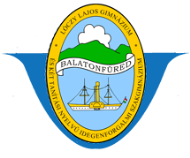Giving Life to Problems: Area-conservative Transformations using GeoGebra
Miből születnek a problémák? Terület-megtartó átalakítások GeoGebrával
Egy síkidom négyszögesítésén azt értjük, hogy meg kell szerkesztenünk egy négyzetet, aminek pontosan ugyanakkora a területe, mint az adott síkidomé. A terület-megtartó átalakítások témakörében felmerülő problémák révén élvezzük együtt a geometria szépséget, átélve, amint néhány jól ismert tétel életre kel a dinamikus GeoGebra környezetben végzett konstrukciók során az alábbi óravázlatnak megfelelően!
The quadrature of a planar object means the construction of a square that has exactly the same area as the given object. Enjoy the beauty and the power of geometry as some famous theorems come alive in the dynamic GeoGebra environment of the construction process.
The Quadrature of a Polygon with GeoGebra
Dr. Agnes Tuska
Department of Mathematics
California State University, Fresno
This email address is being protected from spambots. You need JavaScript enabled to view it.
Outline of the lesson
Challenge Problem: Given the quadrilateral, construct a triangle that has exactly the same area as the given quadrilateral. Construct as many different triangles as you can. Explain your construction methods.
Generalizations/modifications of the challenge:
-
How could you construct a triangle that has the same area as a given polygon of many vertices (pentagon, hexagon, etc.)? (TIMSS video study, task in Japanese 8th grade class).
-
How could you construct a rectangle that has the same area as a given quadrilateral?
-
Quadrature of a quadrilateral: How could you construct a square that has the same area as a given quadrilateral?
-
Quadrature of a polygon: How could you construct a square that has the same area as a given polygon of many vertices (pentagon, hexagon, etc.)?
Explorations with GeoGebra*:
-
How to draw polygons?
-
How to draw heights of triangles?
-
How to use “move”?
-
How to demonstrate theorems with visuals and dynamic worksheets?
-
How to understand, visualize, explore, and investigate relationships/theorems?
Historical Background
Thales’ Theorem (Thales 622-547 B.C.)
Pythagorean Theorem (Pythagoras 585-500 B.C)
Construction tools in geometry: Compass and straight edge only (Plato 429-348 B.C.)
Quadrature of the “lunes” (Hippocrates 460-380 B.C.)
Quadrature of a rectangle: Euclid’s Elements, Book II, Proposition 14 (Euclid 323-285 B.C.)
The works of Euclid and Thales together: Opportunity to prove the relationship between arithmetic and geometric mean
Quadrature of a Parabola (Archimedes 287-212 B.C.)
Famous Unsolved Problem of Antiquity: Quadrature of a circle is impossible if only compass and straight edge is allowed as tools (Lindemann 1852-1939 )
Reference book for further readings:
The History of Mathematics: An Introduction (7th edition) by David M. Burton, McGraw-Hill Companies, Inc., 2011.
*GeoGebra, developed first by Markus Hohenwarter and perfected by an international community of volunteers, is an open source (free!) and multi-platform dynamic mathematics software program for schools that joins geometry, algebra and calculus. It has received several international awards, is available in more than 30 languages, and runs on virtually any operating system. It is an easy-to-use, versatile tool for visualizing mathematical concepts from elementary through college level. GeoGebra offers the opportunity for teachers to create interactive online learning environments to foster experimental and discovery learning. In addition, the GeoGebra website provides platforms for sharing free interactive teaching materials and obtaining support from fellow users. Moreover, unlike commercial products constrained by site licenses, students are not limited to use the software only in schools. Therefore, GeoGebra has the potential to transform the way mathematics is being taught. To learn more and to download GeoGebra, visit the official GeoGebra website at www.geogebra.org .






